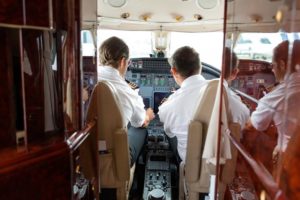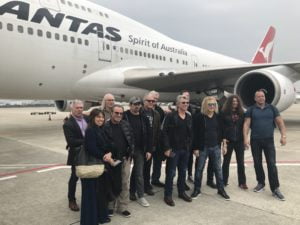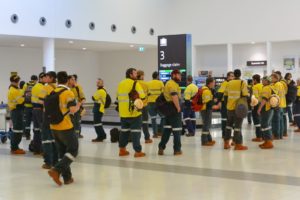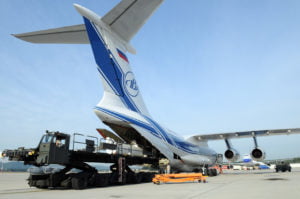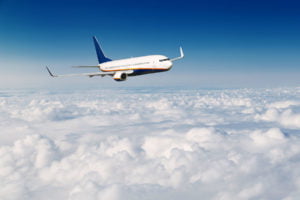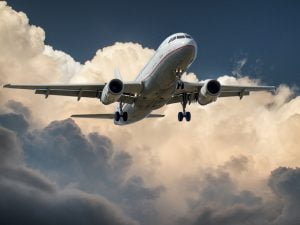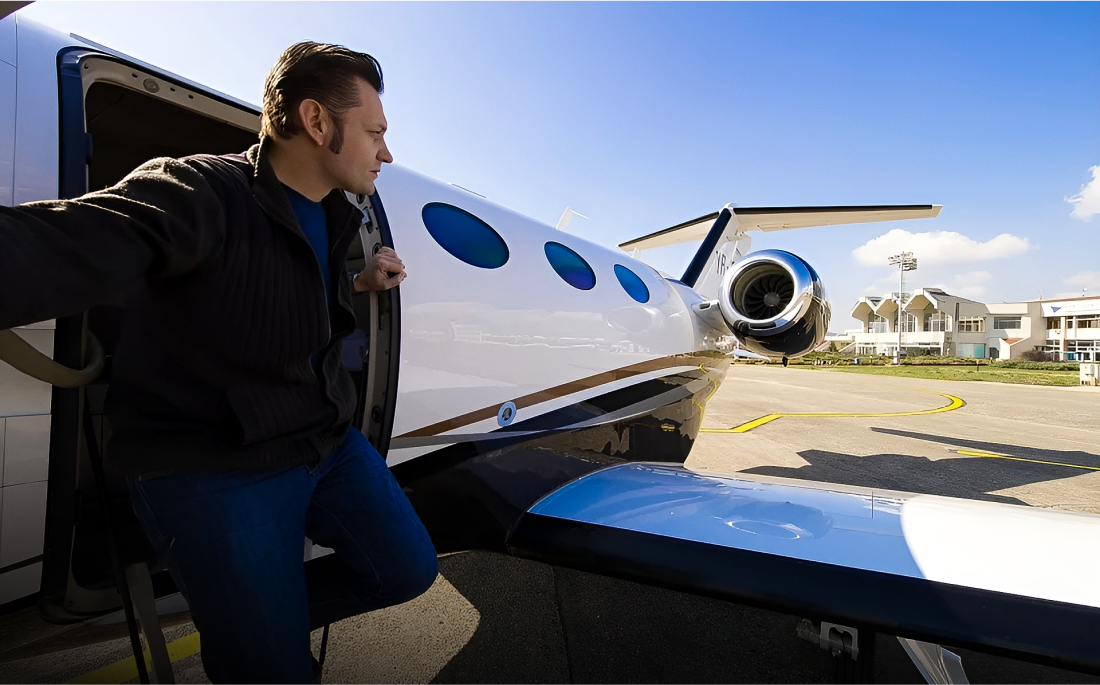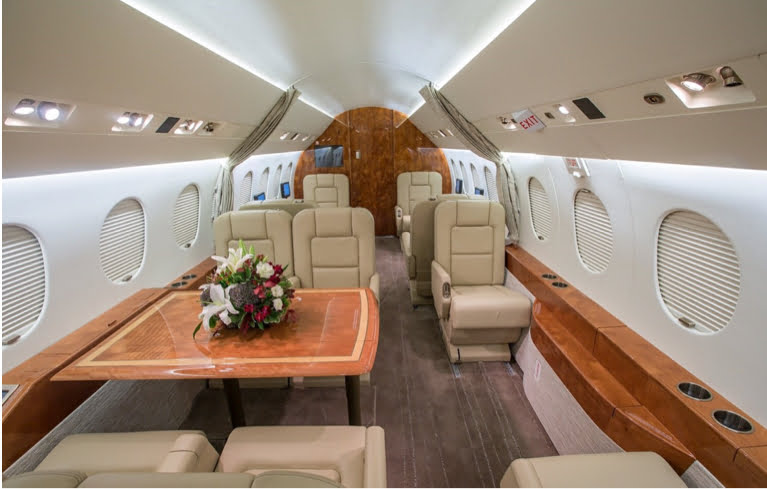Sick of sitting in airport lounges waiting for delayed flights between Sydney, Melbourne, and Brisbane? You’re not alone! Thousands of Australian executives waste valuable hours each week dealing with the rigid schedules and frequent disruptions of commercial aviation.
Private jets offer a practical solution that puts you back in control. Rather than working around airline timetables, you dictate when and where you fly. The best private jet brands understand Australian conditions, delivering aircraft that are well-suited to our unique mix of long distances, diverse airports, and demanding business schedules.
Think of it this way: while your competitors are stuck in departure lounges, you’re already conducting business at your destination.
Choosing the right aircraft for Australian operations isn’t just about speed and luxury. Range capabilities determine which destinations you can reach nonstop. Runway requirements decide whether you can access smaller regional airports that commercial flights can’t serve. Cabin comfort affects how you feel when stepping off the plane for important meetings.
We’ve evaluated five aircraft specifically for their performance on shorter Australian routes. The flights that matter most for business and leisure travel across our vast continent. Each option brings distinct advantages, from the innovative single-pilot Cirrus Vision Jet to the proven Cessna Citation Mustang.
The question is: which aircraft matches your specific travel needs and budget?
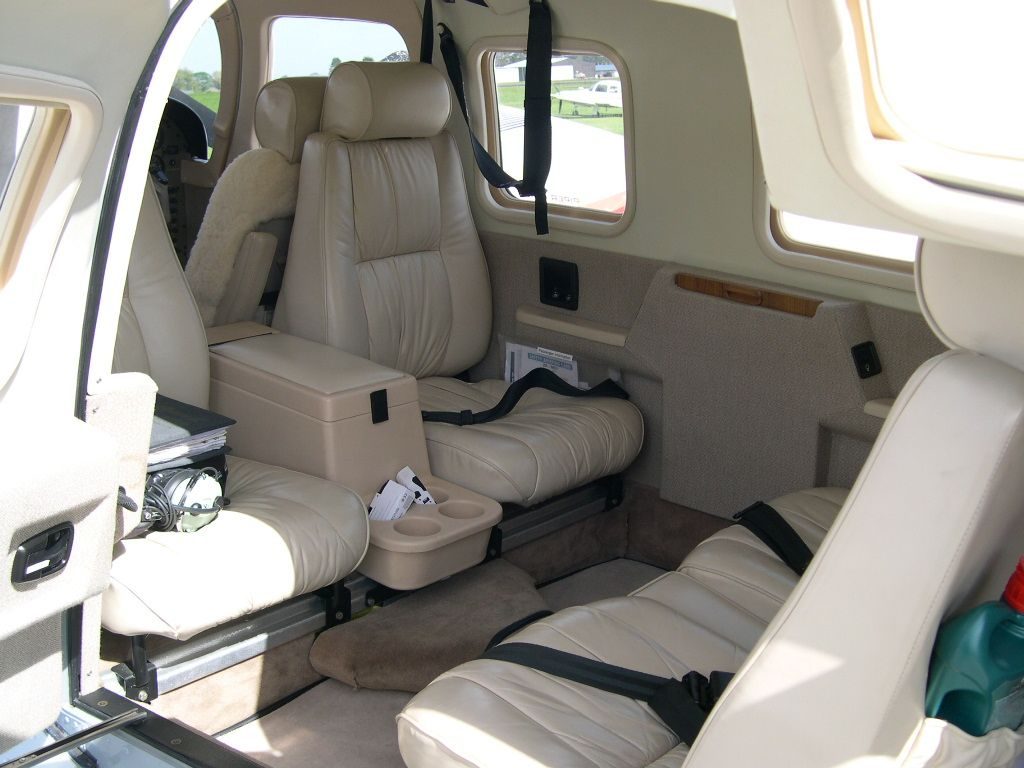

The world’s first single-engine personal jet has earned its place in Australian skies through innovation and practicality. The Cirrus Vision Jet creates its own category. Offering jet performance with simplified operations that appeal to owner-pilots and growing businesses alike.
Cirrus Vision Jet key features
What immediately sets the Vision Jet apart? It’s a distinctive V-tail design and a single Williams FJ33-5A engine mounted above the fuselage. This configuration isn’t just for aesthetics. It delivers exceptional performance efficiency while reducing complexity.
Safety remains the standout feature. The Vision Jet includes the Cirrus Airframe Parachute System (CAPS). A whole-aircraft recovery parachute deployable in emergencies. For Australian operations across remote areas, this innovation provides peace of mind that traditional jets simply cannot match.
The flight deck showcases Garmin’s Perspective Touch+ avionics suite, featuring intuitive touchscreen interfaces and synthetic vision technology. More importantly, Cirrus’s “Safe Return” emergency autoland system can autonomously land the aircraft if the pilot becomes incapacitated. Technology that represents a genuine advancement in aviation safety.
Carbon fibre construction creates a lightweight yet durable airframe, contributing to both performance and fuel efficiency. The single-engine design also simplifies maintenance requirements compared to twin-engine alternatives. A practical advantage for operators managing their own aircraft.
Cirrus Vision Jet cabin comfort
Don’t let the compact exterior fool you. The Vision Jet accommodates up to five adults plus two children in a flexible configuration that works equally well for family weekends or small business teams.
Cabin dimensions measure 4.1 feet in height and 5.1 feet in width. While not offering stand-up headroom, these proportions allow comfortable movement throughout the space. Large windows positioned at each seat flood the interior with natural light while showcasing Australia’s diverse landscapes below.
Practical amenities include USB charging ports, fold-out tables, and optional entertainment systems. The cabin maintains a pressure altitude of 8,000 feet when cruising at 28,000 feet, reducing passenger fatigue on longer journeys between Australian capitals.
Noise levels stay remarkably low thanks to strategic insulation and the engine’s high mounting position, creating an environment conducive to conversation or concentrated work. Climate control systems maintain consistent temperature regardless of external conditions. Particularly valuable when crossing Australia’s varied climate zones.
Cirrus Vision Jet performance for short flights
The Vision Jet excels at connecting Australia’s business centres efficiently. With a maximum cruise speed of 300 knots, typical flight times include:
- Sydney to Melbourne: under 1 hour
- Brisbane to Sydney: approximately 1 hour
- Adelaide to Melbourne: about 1 hour
- Perth to regional mining centres: direct access
Maximum range reaches 1,200 nautical miles, covering most eastern seaboard routes non-stop. More importantly, the aircraft operates from runways as short as 3,500 feet. Opening access to smaller regional airports that larger jets cannot utilise.
Fuel consumption averages just 70 gallons per hour during cruise, significantly less than twin-engine competitors. Operating costs remain manageable for frequent short-haul travel, while the service ceiling of 28,000 feet allows pilots to climb above most weather systems common across Australia.
Cirrus Vision Jet pricing
The Vision Jet represents an accessible entry into private aviation. New aircraft retail for approximately $2.5-3 million USD ($3.7-4.5 million AUD), positioning it as an entry-level option among serious business aircraft.
Hourly operating expenses typically range between $1,000-1,500 USD, including fuel, maintenance reserves, and miscellaneous costs. This translates to considerably lower per-trip expenses for short Australian flights compared to larger alternatives.
Ownership structures include traditional purchase, fractional programs, and jet cards, depending on usage patterns. The single-engine design contributes to maintenance simplicity, with annual fixed costs generally lower than twin-engine competitors.
Strong residual values reflect ongoing demand for this unique aircraft category. A factor worth considering when evaluating total ownership costs.
Cirrus Vision Jet’s best use case
The Vision Jet serves owner-pilots and small businesses requiring efficient transportation across Australia’s distances. It particularly excels for executives visiting multiple regional locations in a single day, common in mining, agriculture, and healthcare sectors.
Consider routes like Sydney to Dubbo, Melbourne to Mildura, or Brisbane to Rockhampton. These journeys typically involve cumbersome commercial connections or lengthy drives. The Vision Jet makes them direct, efficient flights.
Family travel represents another optimal application, combining safety features with cabin comfort for recreational trips to destinations like the Gold Coast, Whitsundays, or Tasmania. The simplified pilot interface makes this ideal for owner-operators who prefer handling their own flights.
Most importantly, the Vision Jet’s ability to access shorter runways opens travel possibilities to locations underserved by commercial aviation. Creating significant time advantages for businesses with distributed interests across Australia.
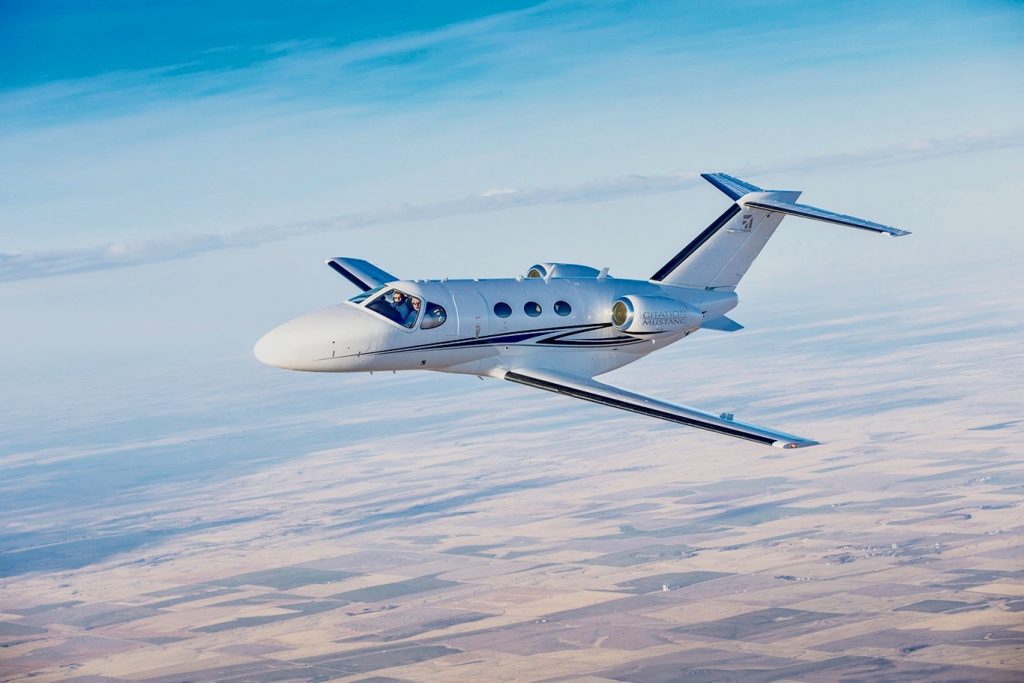

The Cessna Citation Mustang has built its reputation on reliability. Exactly what Australian businesses need when connecting remote operations across our vast continent. This “Mini Mustang” delivers proven performance that thousands of operators worldwide trust for their most critical flights.
Cessna Citation Mustang key features
Cessna didn’t achieve decades of aviation leadership by accident. The Citation Mustang represents years of engineering refinement, powered by dual Pratt & Whitney PW615F engines that provide the redundancy essential for Australian operations.
The flight deck features Garmin’s G1000 glass cockpit. Three large LCDs that give pilots comprehensive flight information at a glance. Weather radar, terrain awareness, and traffic monitoring come standard, critical features when you’re flying between capital cities and remote mining sites across Australia.
Structurally, the Mustang uses proven aluminium construction that balances weight with durability. The tricycle landing gear handles everything from polished city airports to rough regional strips – important when your business takes you to places commercial airlines don’t serve.
Here’s what sets the Mustang apart: certified single-pilot operation. This means your company pilot can operate the aircraft legally without a co-pilot, reducing operating costs while maintaining full capability for Australian business travel.
Cessna Citation Mustang cabin comfort
Step inside and you’ll find more space than the exterior suggests. The cabin stretches 9.8 feet in length with 4.6 feet of height and 4.7 feet of width. Generous dimensions for four passengers in a club seating arrangement.
Individual leather seats recline independently, letting passengers adjust for comfort whether they’re reviewing contracts or relaxing after closing a deal in regional Queensland. Personal reading lights and air vents give everyone control over their immediate environment.
Storage won’t be a problem. The external baggage compartment holds 63 cubic feet, while internal storage keeps essential items accessible during flight. Whether you’re carrying mining samples, agricultural equipment, or presentation materials, there’s space for what matters to your business.
The cabin stays comfortable at a pressure altitude of 8,000 feet even when cruising at 41,000 feet. This reduces fatigue on longer flights. Important when you’re travelling from Perth to Kalgoorlie and need to be sharp for that afternoon meeting.
Cessna Citation Mustang performance for short flights
Numbers tell the story of why the Mustang works so well for Australian operations. Cruising at 340 knots (630 km/h), it connects major destinations efficiently:
- Sydney to Melbourne in approximately 1 hour
- Brisbane to Sydney in about 1 hour
- Adelaide to Melbourne in under 1 hour
- Perth to regional Western Australian mining centres
The 1,150 nautical mile range covers most domestic Australian routes without refuelling stops. More importantly, fuel consumption of just 100 gallons per hour keeps operating costs reasonable for frequent travel.
Runway performance opens doors that bigger jets can’t access. With a minimum requirement of just 3,110 feet, the Mustang reaches numerous regional airports throughout Australia, bringing you closer to your final destination and reducing ground transport time.
The service ceiling of 41,000 feet lets pilots climb above weather systems. Particularly valuable during Australia’s storm seasons. Quick climb performance means you reach efficient altitudes fast, maximising productive flight time on those multi-stop days visiting regional operations.
Cessna Citation Mustang pricing
The Mustang represents solid value in the private jet market, though production ended in 2017. Pre-owned examples typically range from $2.5-4.2 million AUD, depending on age, condition, and total flight hours.
Operating economics make sense for regular Australian travel. Direct costs run approximately $1,800-2,400 AUD per hour, covering fuel, maintenance reserves, and miscellaneous expenses. Annual fixed costs, including insurance, hangar fees, and scheduled maintenance, add roughly $225,000-300,000 AUD to ownership expenses.
Various ownership structures suit different usage patterns. Outright purchase, fractional ownership, or jet cards. The established maintenance network across Australia provides confidence for prospective owners concerned about ongoing support in remote locations.
Cessna Citation Mustang best use case
The Mustang shines for Australian businesses with distributed operations requiring regular executive presence. Mining companies use them to connect Perth headquarters with remote sites. Agricultural enterprises shuttle between processing facilities and regional offices. Healthcare organisations move specialists between capital cities and regional hospitals.
Consider a typical mining executive’s schedule: Sydney office in the morning, site inspection in Broken Hill by lunch, afternoon meeting in Adelaide, back to Sydney for dinner. Commercial aviation makes this impossible. The Mustang makes it routine.
Charter operators appreciate the Mustang’s economics for on-demand services. The typical 1-2 hour flights most requested by Australian charter clients align perfectly with the aircraft’s capabilities and operating costs.
Family operators find value, too. Those weekend getaways to Tasmania or the Whitsundays become simple, direct flights without commercial aviation’s scheduling constraints. The proven reliability record and comprehensive support network make the Mustang practical for first-time jet owners entering private aviation.
Note: The Citation Mustang’s proven track record and established support infrastructure make it particularly suitable for Australian operators prioritising reliability over cutting-edge features.
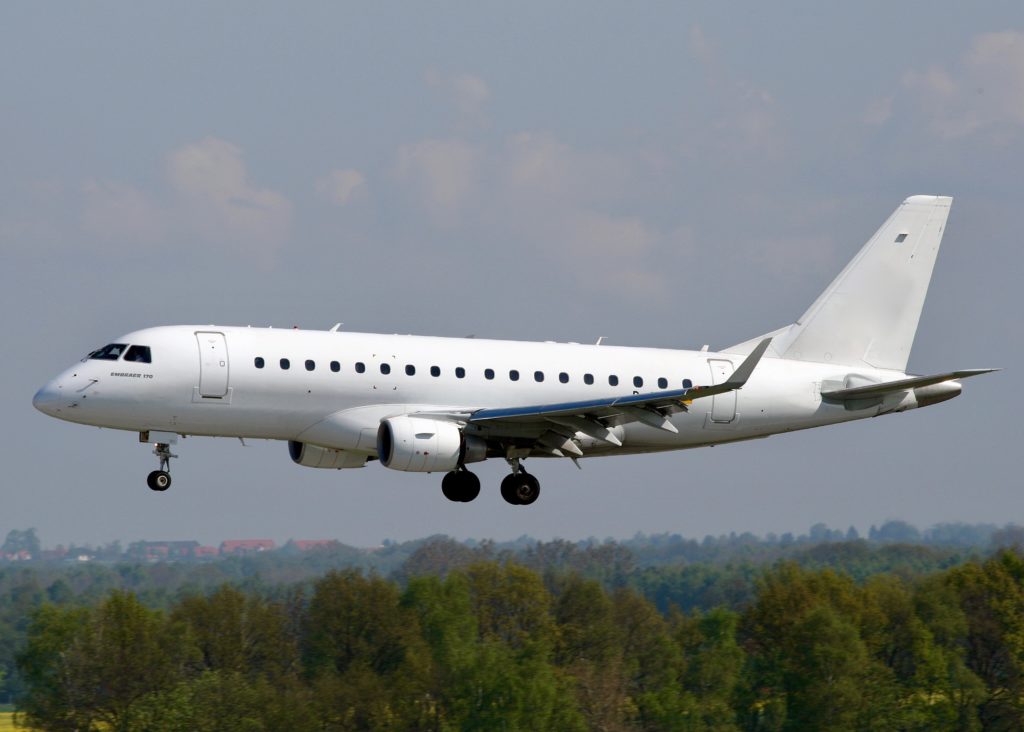

Step up from entry-level jets and you’ll find the Embraer Phenom 300. An aircraft that delivers serious performance for Australian operators who won’t compromise on speed or comfort. This Brazilian-engineered jet has earned its reputation among executives who need to cover more ground, faster.
Embraer Phenom 300 key features
The Phenom 300’s twin Pratt & Whitney PW535E engines deliver an exceptional thrust-to-weight ratio. Crucial when departing from shorter regional Australian runways with full passenger loads. These powerplants enable swift climbs to cruise altitude, maximising efficiency on domestic sectors.
Pilots work with the Prodigy Flight Deck 300 avionics (built on Garmin G3000 architecture), featuring intuitive touchscreen controls that simplify flight management. The system includes synthetic vision technology. Particularly valuable when navigating Australia’s diverse terrain and challenging approaches to mining airstrips.
What sets this aircraft apart? Advanced safety systems are typically found on much larger jets. The brake-by-wire system with anti-skid protection and carbon brakes provides confident stopping power even on shorter runways. Redundant systems ensure reliability when operating to remote Australian destinations where maintenance support might be limited.
The Phenom 300’s leading-edge winglets aren’t just for show. They improve aerodynamic efficiency, reducing fuel burn and extending range. For operators covering Australia’s vast distances, these efficiency gains translate to meaningful cost savings over time.
Embraer Phenom 300 cabin comfort
Here’s where the Phenom 300 starts to separate itself from smaller competitors. The cabin stretches 17 feet 2 inches in length, with 4 feet 11 inches of height and 5 feet 1 inch of width. Dimensions that actually matter when you’re hosting client meetings or conducting business during flight.
Most Australian operators choose a seven-seat configuration that maximises personal space rather than cramming in nine passengers. The club seating arrangement facilitates face-to-face business discussions while maintaining enough separation for private phone calls.
Embraer’s signature oval windows flood the cabin with natural light. Significantly larger than what you’ll find on competing aircraft. The result? Passengers arrive feeling refreshed rather than confined after flights across Australia’s eastern seaboard.
The pressurisation system maintains a comfortable 6,600-foot cabin altitude when cruising at 45,000 feet. Your passengers will notice the difference, arriving at business meetings without the fatigue that comes from lower-performing aircraft systems.
Embraer Phenom 300 performance for short flights
The numbers tell the story: 453 knots maximum cruise speed that turns Australia’s major business routes into quick hops:
- Sydney to Brisbane: 45 minutes
- Melbourne to Adelaide: 40 minutes
- Perth to Kalgoorlie: Under 1 hour
Short runway performance opens doors that commercial aviation can’t touch. Requiring only 3,138 feet for takeoff, the Phenom 300 accesses regional airports throughout Australia, bringing you closer to final destinations and eliminating lengthy ground transfers.
The certified ceiling of 45,000 feet allows pilots to climb above weather systems that might delay or divert slower aircraft. Quick climb performance means you reach optimal cruising altitudes fast, maximising productive flight time even on 45-minute sectors.
Embraer Phenom 300 pricing
Expect investment levels around $9-10 million USD for new aircraft. Positioning this jet in premium territory among light aircraft options. The pricing reflects genuine performance capabilities rather than just luxury appointments.
Pre-owned examples offer the aircraft’s fundamental advantages at reduced acquisition costs, though strong residual values reflect ongoing market demand. Operating costs remain competitive with larger midsize jets while delivering comparable speeds on Australian domestic routes.
Ownership Options:
- Traditional purchase for high-utilisation operators
- Fractional programmes through established Australian providers
- Jet cards for predictable but lower annual usage
The established maintenance network throughout Australia provides confidence for operators concerned about ongoing support costs.
Embraer Phenom 300 best use case
The Phenom 300 hits its stride, serving growing businesses with operations spanning multiple Australian states. Think mining companies with head offices in Perth and project sites across Western Australia, or agricultural businesses covering properties from Queensland to Victoria.
Executive teams particularly value the aircraft’s ability to handle same-day multi-city itineraries that would be impossible via commercial flights. Brisbane-Rockhampton-Mackay-Brisbane becomes a productive day trip rather than a week-long odyssey involving overnight stays.
Corporate flight departments appreciate the flexibility. Short hops between capital cities when needed, but with range capabilities extending to Perth or Darwin when business demands it. This versatility maximises aircraft utilisation within busy corporate schedules.
For operators requiring reliable access to remote mining sites, agricultural properties, or manufacturing facilities, the Phenom 300’s combination of speed, airport accessibility, and passenger comfort creates genuine competitive advantages over slower alternatives.
Nextant 400XTi
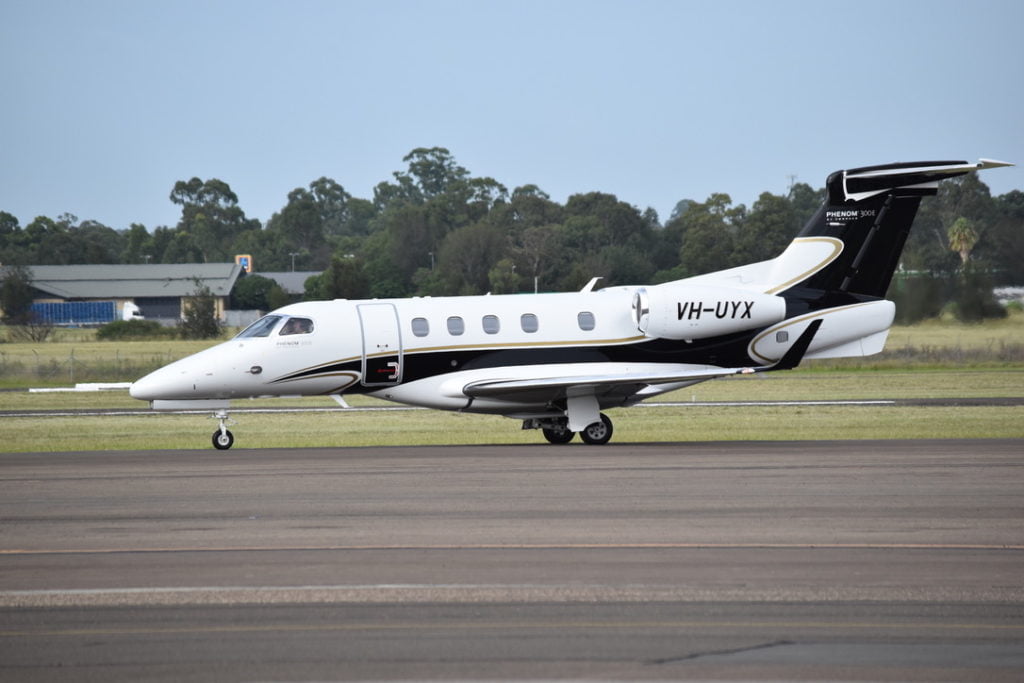

What happens when you take a proven aircraft design and rebuild it with modern technology? The Nextant 400XTi answers that question with its innovative remanufacturing approach. Taking the reliable Beechjet 400A/Hawker 400XP platform and creating a thoroughly updated business jet for cost-conscious Australian operators.
This isn’t just a refurbishment. Nextant strips these aircraft down to their structural core, then rebuilds them with contemporary systems, engines, and avionics. The result? Near-new performance at a fraction of the cost.
Nextant 400XTi key features
The 400XTi’s remanufacturing process preserves what works. The proven airframe structure that made the original Beechjet popular with Australian corporate operators for decades. Everything else gets upgraded.
Engine Technology
Williams FJ44-3AP engines replace the original powerplants, delivering improved performance while burning less fuel. These modern turbofans provide the reliability Australian operators need when flying between remote mining sites or regional business centres.
Flight Deck Modernisationcentres
Pilots work with the Rockwell Collins Pro Line 21 avionics suite, featuring advanced navigation and weather detection capabilities. This system proves particularly valuable when navigating Australia’s diverse terrain and sometimes unpredictable weather patterns.
Aerodynamic Enhancements
Redesigned nacelles and enhanced winglets optimise airflow around the aircraft. These modifications might seem minor, but they contribute meaningfully to fuel efficiency on the short routes common in Australian business aviation.
The aircraft maintains excellent short-field performance. Crucial for accessing smaller regional airports that larger jets simply can’t use. Yet it retains the robust construction quality that made the original platform a favourite among Australian corporate flight departments.
Nextant 400XTi cabin comfort
Step inside the 400XTi and you’ll notice the completely redesigned interior immediately. The square-oval cabin cross-section maximises both headroom and shoulder space. Important considerations for executives conducting business discussions during flight.
Seating Configuration
The standard layout accommodates seven passengers, typically arranged as a four-person club section plus additional forward-facing seats. Australian operators appreciate this flexibility, whether they’re transporting executive teams or families heading to coastal destinations for weekend getaways.
Practical Design Elements
Large windows positioned throughout the cabin flood the space with natural light while providing excellent views of Australia’s varied landscapes below. The fully flat floor eliminates the centre aisle ridge found in some competitors, making movement throughout the cabin easier during flight.
Essential business amenities include fold-out tables, power outlets for laptops and mobile devices, plus entertainment options for longer flights. The refreshment centre handles beverages and light catering. Practical features for multi-leg journeys across Australia.
Nextant 400XTi performance for short flights
The 400XTi excels at connecting Australia’s major business centres efficiently. From executive airports around Sydney, Melbourne, or Brisbane, the aircraft provides quick access to city business districts while minimising ground transportation time.
Operational Strengths
Routes connecting regional centres with capital cities showcase the 400XTi’s efficiency advantages most clearly. These flights – often too short for larger jets to operate economically. Represent the aircraft’s sweet spot for Australian operations.
The aircraft demonstrates impressive reliability, a critical factor for operators conducting frequent flights throughout Australia. When your business depends on getting to multiple locations in a single day, aircraft availability becomes paramount.
Australian Route Suitability
The 400XTi handles Australia’s varied airport conditions well, from major terminals to smaller regional strips. This airport accessibility opens up travel possibilities to locations underserved by commercial aviation.
Nextant 400XTi pricing
Here’s where the 400XTi’s remanufacturing concept creates real value. Nextant delivers near-new aircraft performance while charging significantly less than new-build alternatives.
Acquisition Economics
The value-oriented approach makes financial sense for businesses expanding into jet operations without the capital requirements of purchasing new aircraft. Yet residual values remain strong, providing owners with reasonable exit options as their needs change.
Operating Considerations
Ownership structures range from traditional purchase to various shared arrangements, depending on your usage patterns. For Australian businesses with predictable travel schedules between major cities and regional centres, ownership often provides cost advantages over on-demand charter services.
Nextant 400XTi best use case
Australian businesses with distributed operations across multiple states find the 400XTi particularly well-suited to their needs. Companies maintaining offices or facilities in different locations benefit from the aircraft’s ability to connect these sites efficiently.
Resource Sector Applications
Mining companies use the 400XTi effectively for accessing remote project sites from corporate headquarters in Perth, Brisbane, or Adelaide. The time savings compared to commercial alternatives often justify the investment for companies that value executive productivity.
Charter Operations
Charter operators throughout Australia have adopted the 400XTi, where its economics align with frequent flyers who don’t want full ownership commitments. The aircraft’s performance characteristics match typical Australian charter missions well.
For growing businesses ready to move beyond turboprop aircraft, the 400XTi presents an excellent transition option. It balances acquisition costs with jet performance capabilities, creating exceptional value for Australian short-haul operations.
Note: The 400XTi suits businesses that prioritise operating economics while still requiring jet speed and airport accessibility for their Australian travel requirements.
Learjet 75 Liberty
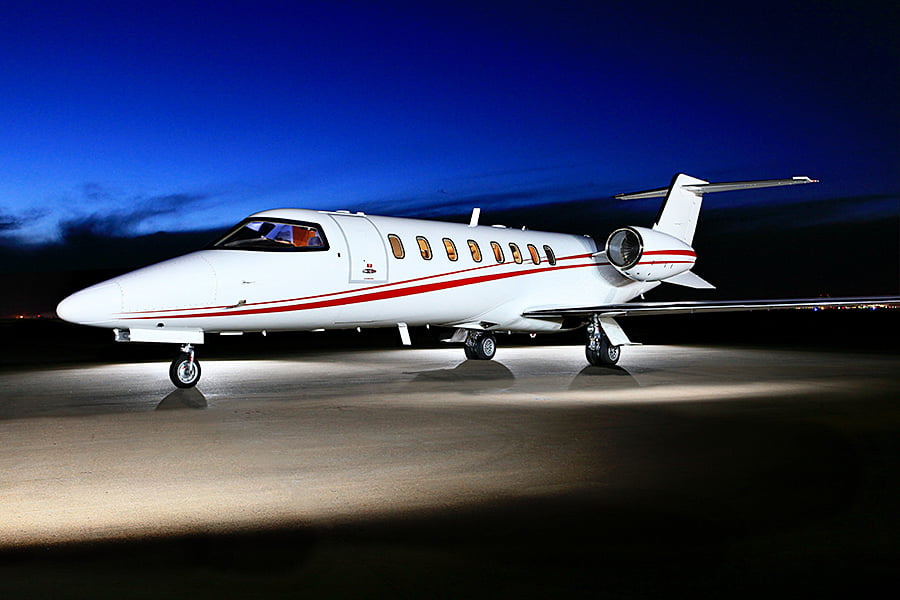

The Learjet name carries serious weight in Australian business aviation circles. The Learjet 75 Liberty represents the latest evolution of this legendary brand, delivering the performance and prestige that executives expect from one of aviation’s most recognisable names.
Learjet 75 Liberty key features
Honeywell TFE731-40BR engines power the Liberty, providing the thrust needed for rapid climbs from Australian airports. The Garmin G5000 avionics suite offers pilots touchscreen controls and advanced flight management—standard equipment for this class of aircraft.
What sets the Liberty apart? Its distinctive wingtip cuffs replace conventional winglets while still delivering aerodynamic benefits. The robust landing gear handles everything from polished city airports to rougher regional strips across Australia.
Learjet 75 Liberty cabin comfort
Step inside and you’ll find a flat-floor cabin with unobstructed movement throughout. Six passengers fit comfortably in the club configuration. Perfect for executive teams travelling between Australian capitals.
Advanced sound dampening keeps cabin noise to a minimum, allowing productive work or quiet conversation during flight. The pressurisation system maintains a lower cabin altitude than many competitors, reducing fatigue on longer routes.
Learjet 75 Liberty performance for short flights
The Liberty excels on Australia’s key business routes:
- Brisbane to Sydney in approximately 50 minutes
- Melbourne to Adelaide in about 45 minutes
- Perth to the regional mining centres efficiently
Its steep approach certification proves valuable at airports with challenging approaches. Rapid climb performance gets you to optimal altitude quickly. Maximising efficiency on shorter flights where every minute counts.
Learjet 75 Liberty pricing
This aircraft sits in the premium category with pricing to match. Various ownership structures exist beyond traditional purchase, including fractional programs designed for different usage patterns across Australian operations.
Learjet 75 Liberty best use case
The Liberty works best for established corporate flight departments requiring consistent, high-performance connectivity between major Australian business centres. Companies with executive teams frequently moving between Sydney, Melbourne, and Brisbane will appreciate the speed advantages that translate directly into productivity gains.
The combination of capability and brand recognition makes the Learjet 75 Liberty an obvious choice for operators who value both performance and prestige. Qualities that matter in Australian business circles.
Key Considerations for Australian Operators:
- Runway requirements determine which regional airports you can access
- Passenger capacity affects your ability to conduct group business trips
- Speed differences translate to real-time savings on frequent routes like Sydney-Melbourne
- Engine configuration impacts maintenance costs and operational redundancy
Which Aircraft Suits Your Needs?
Your choice comes down to matching aircraft capabilities with your specific travel requirements and budget. Each option effectively serves different Australian business scenarios.
- Budget-conscious first-time buyers often prefer the Cirrus Vision Jet for its lower acquisition and operating costs, plus the whole-aircraft parachute system provides peace of mind for family flying.
- Established businesses typically choose the Citation Mustang for its proven reliability and reasonable operating economics on frequent short routes.
- Companies requiring premium comfort and faster travel times select the Embraer Phenom 300, particularly when impressing clients matters.
- The value-focused Nextant 400XTi appeals to operators wanting near-new performance without new-aircraft pricing.
- Prestige-conscious executives gravitate toward the Learjet 75 Liberty when brand heritage matters alongside performance.
Consider your typical routes carefully. Flying primarily between major capitals? Speed becomes crucial. Accessing smaller regional airports regularly? Short runway capability matters more than maximum cruise speed. Carrying larger groups frequently? Cabin size trumps operating costs.
Think about usage patterns too. Flying weekly between Sydney, Melbourne, and Brisbane justifies higher acquisition costs through economies of scale. Occasional weekend trips might favour fractional ownership or charter arrangements instead.
Ready to make your decision? Reach out to Air Charter Network for professional Private Charter services and expert advice on selecting the best private jet for your needs.
The right aircraft stops being an expense and becomes a business tool. One that puts you ahead of competitors still dealing with commercial flight delays while you’re already conducting business at your destination.


